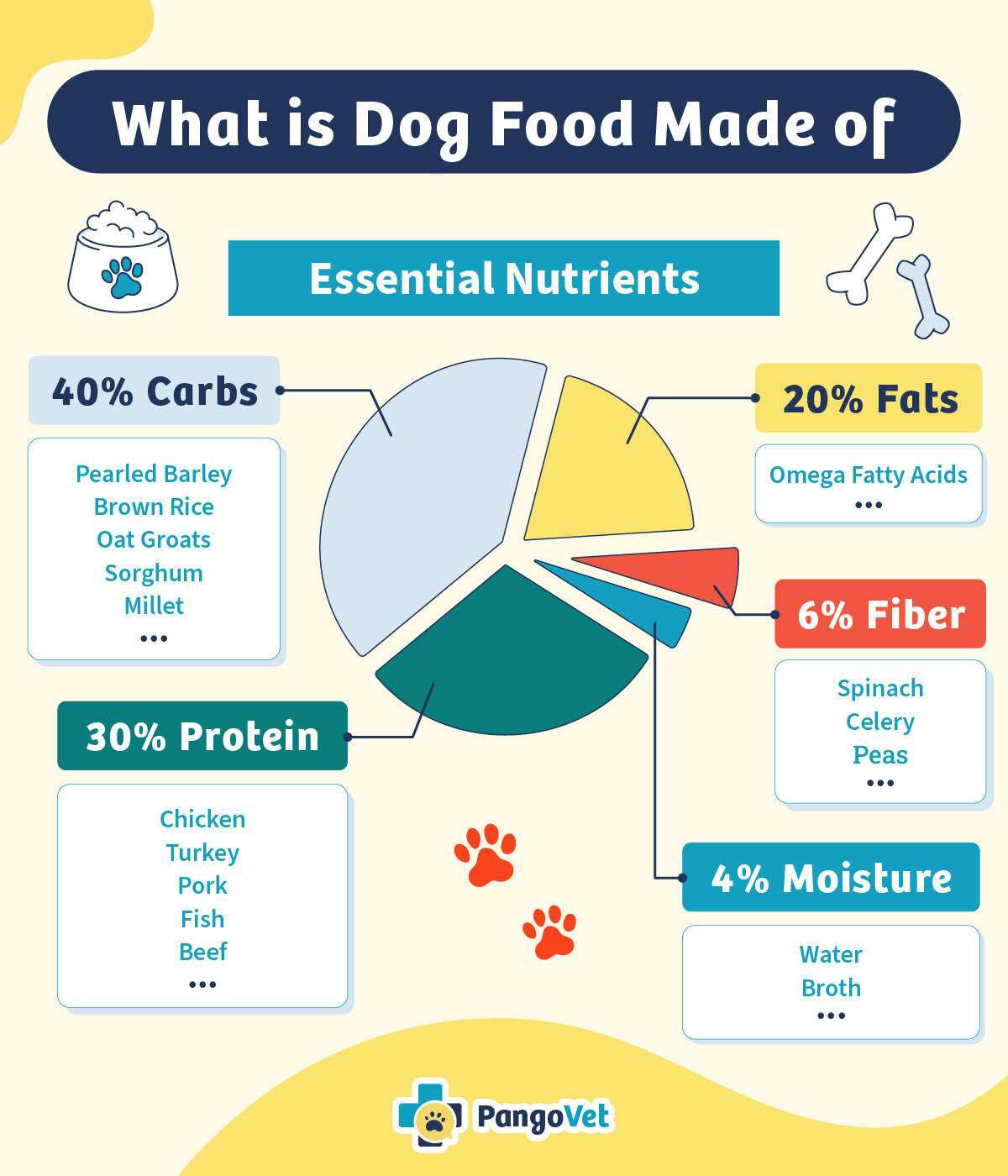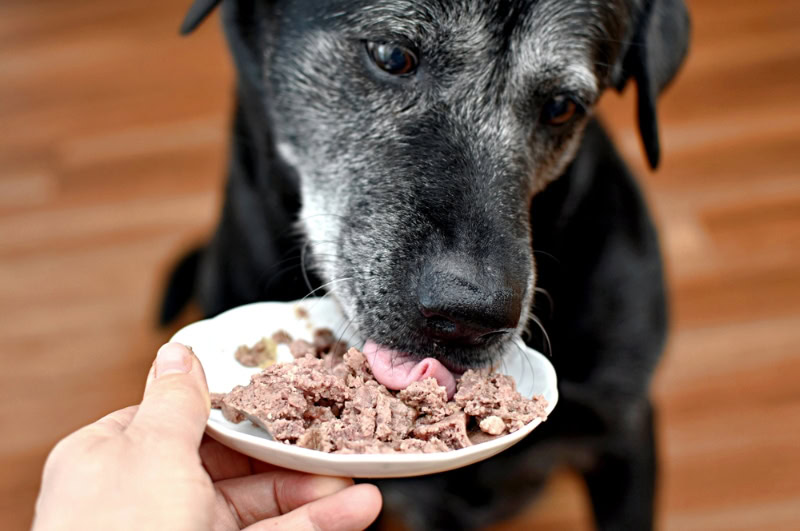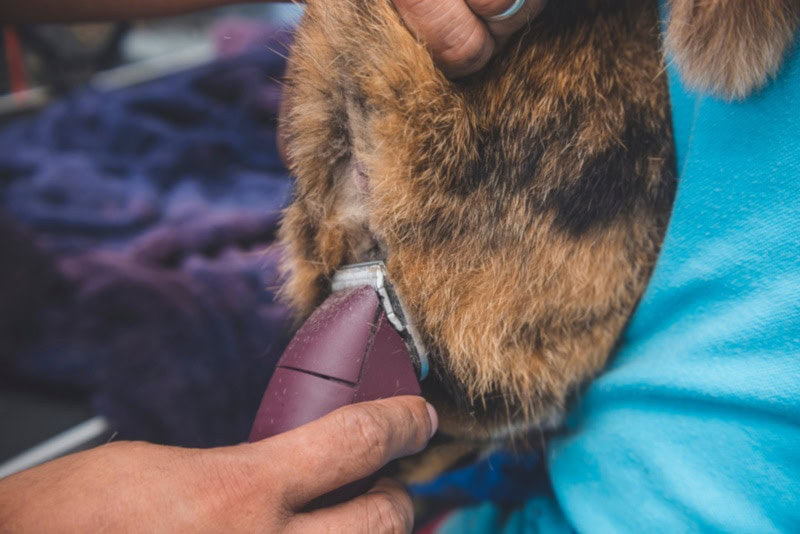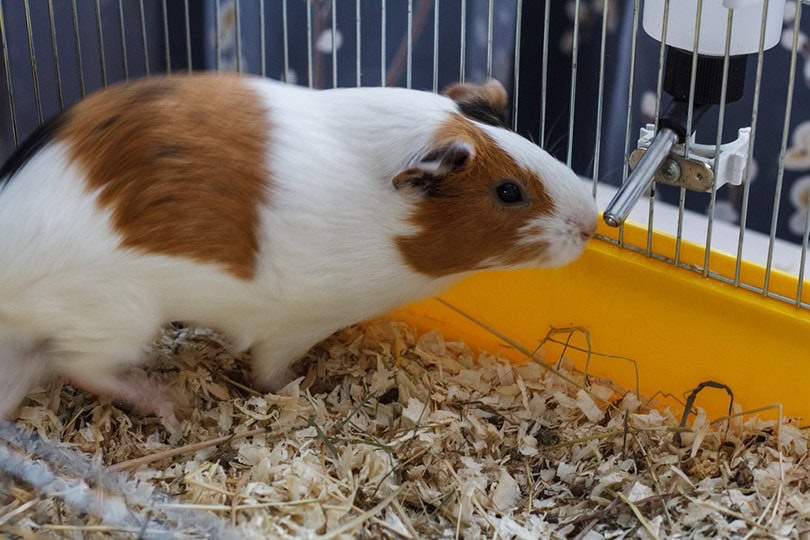VET APPROVED

The information is current and up-to-date in accordance with the latest veterinarian research.
Learn more »Click to Skip Ahead
There are tons of different dog foods on the market. Each has its own breakdown of macronutrients – fats, proteins, and carbohydrates. It can be difficult to figure out exactly how much of each nutrient your dog needs. Protein is extremely important for dogs. It contains the amino acids they need for their muscles, brain, and other organs. Without it, dogs can develop all sorts of problems.
However, too much of a good thing isn’t always best. If dogs eat too much protein, they risk not consuming enough of the other nutrients they need. For this reason, they should consume a balanced amount of protein. In this article, we’ll help you figure out how much protein that may be for your pooch.
Because dogs come in so many shapes and sizes, there isn’t a one-size-fits-all answer to the amount of protein they need. Instead, you’ll need to consider things like your dog’s activity level and size.

How Much Protein Should a Dog Have?

According to the American Association of Feed Control Officials (AAFCO), puppies need to consume foods with a minimum of 22.5% protein, while adult dog food should contain at least 18%. There are no set upper limits to protein recommendations for dogs, but most vets and nutritionists would agree that anything over around 35% protein is too much for dogs. These figures are dry matter values, so the percentages listed on wet food packaging will usually be significantly lower than this.
Puppies need more protein because they are growing. Too much protein can lead to certain health conditions, such as urolithiasis (bladder stones) and kidney disease. In fact, senior dogs and those with kidney problems may benefit from a low-protein diet.
With that said, feeding your dog too much protein is hard to do with an AAFCO-approved commercial diet. If you are preparing your own dog food, be sure to follow a recipe and include a mix of vegetables and supplements to ensure your dog is getting everything they need.
Why Is Protein Important?
Protein is made up of amino acids, which are essential to survival. While dogs can make many of the amino acids they need, there are quite a few that they cannot make. Therefore, they have to consume them in their diet. Furthermore, during certain life stages, they can’t always create enough of the “non-essential” amino acids and need to acquire them through their diet.
There are 22 amino acids that make up protein. Dogs can formulate 12 of these; the other 10 need to be obtained from their food, and are therefore classified as ‘essential’. Quite a few of the 12 that your dog can make can only be created in limited amounts, which may not be enough for your dog at all times. Pregnant dogs in particular often require more amino acids than they can make themselves.
Protein is essential for many bodily functions. While your dog does need protein to build and maintain muscles, it is also required for the immune system, brain, and many other body parts. Without protein, your dog simply can’t function.
There are different kinds of protein sources as well. The best protein sources are “complete,” which means that they contain all the essential amino acids. However, that doesn’t necessarily mean that they contain all of the nonessential amino acids.
When it comes to keeping any dog or puppy fit and healthy, diet and high-quality protein sources are key. Spot & Tango uses excellent ingredients to provide your fur baby with the best possible nutrition.
Are you ready to save 50% on Spot & Tango HUMAN-GRADE premium dog food? Click here to get started!
Different Sources of Protein

Just because a food has a certain amount of protein in it doesn’t mean that your dog will digest and absorb all of the protein that is necessary. The biological value (BV) of food describes how digestible and absorbable it is. A food with a low BV doesn’t digest easily and isn’t easily used by the dog, so they likely won’t actually get all of the protein in it. On the other hand, a high BV represents food that can easily be digested and used.
Technically, corn is quite high in protein. However, dogs aren’t very good at utilizing these proteins. Generally, meat-based proteins like chicken and beef are far more digestible and usable by your dog. Furthermore, corn also doesn’t have all the amino acids your dog needs, so you will need to pair it with other ingredients to meet your dog’s protein needs.
For this reason, it is important to consider the type of protein as well as the amount. If you just purchase the food with the most protein, your dog might not actually be absorbing more. Whole foods like meat, fish, and other animal products are typically your best bet. They provide the most usable protein by calorie.
Check out the ingredients in your dog’s food to determine where the protein is coming from. Look for things like “pea protein,” which is just concentrated veggie protein. Even if it isn’t the first ingredient, this is extremely concentrated and contains a lot of lower-quality protein, which can drive up the overall content.
HOT TIP!
Here’s a quick and easy way to get an idea of whether or not your dog’s diet has a high BV – check the poo!
The bigger, softer, and more frequent their poop, the less their body is absorbing, which is why it pays to invest in high quality pet food.
Cheap food isn’t much use if most of it comes straight out the other end!
What About Meat Meal and Meat By-Products?

Of course, not all meat products are made equal. Many people also question the quality of meat meal and meat by-products, which are often used as protein sources in many different foods.
Meat meal is something you will often see on a pet food label. It’s not necessarily a bad thing, but it is a lower quality ingredient. Meat meal comes from meat that has been deemed unfit for human consumption. It undergoes a rendering process, ultraheating it to eradicate any possible pathogens, before it is then included in pet food. This heat treatment does degrade the nutrient value of the meat, so foods that contain a large proportion of meat meal, particularly if it is listed as the first ingredient, will not be as nutritious as those that list a whole meat item.
However, it is important that the source of the meal is named. You don’t want to purchase something with “meat meal,” as the “meat” could literally mean anything. If your dog is allergic to an ingredient, “meat meal” is a certain no-go. Things like “chicken meal” and “beef meal” are perfectly fine.
By-products are a bit more complicated, as they can be a lot of different things. By-products can include nutritious ingredients that just aren’t eaten by humans in the western world – like organs and cartilage. However, by-products can also include things that contain hardly any nutrients at all, like feathers.
While dogs would naturally eat feathers in the wild, they shouldn’t be eating only feathers. When the ingredients are only listed as by-products, it is impossible to know what your dog is eating. For this reason, by-products are usually considered lower-quality.
FUN FACT
There is actually a dog food that uses feathers as the primary protein source! The unfortunately named Anallergenic from Royal Canin uses this unusual ingredient to help identify and treat food allergies in dogs.

Conclusion
A dog’s protein needs will vary, but it is hard to give them too much if you are feeding them a commercial diet. Puppies should be consuming at least 22.5% protein, while adults need a minimum of 18%, but very active dogs will need much higher amounts. As a general rule, dog food shouldn’t contain more than around 35% protein, so if you are in doubt, speak to your vet. If you are making dog food at home, make sure you seek veterinary advice first and follow a recipe to ensure it contains the right balance of nutrients. Dogs should consume a variety of ingredients, not just meat.
Perhaps more importantly, make sure that the diet you are feeding your dog contains high-quality protein sources. This means that the meat should be named, and while meal is okay, avoid foods that just say “meat meal” or “meat by-products”. Essentially, a high quality commercial dog food should meet all of your dog’s nutritional needs.
Featured Image Credit: Pommer Irina, Shutterstock











